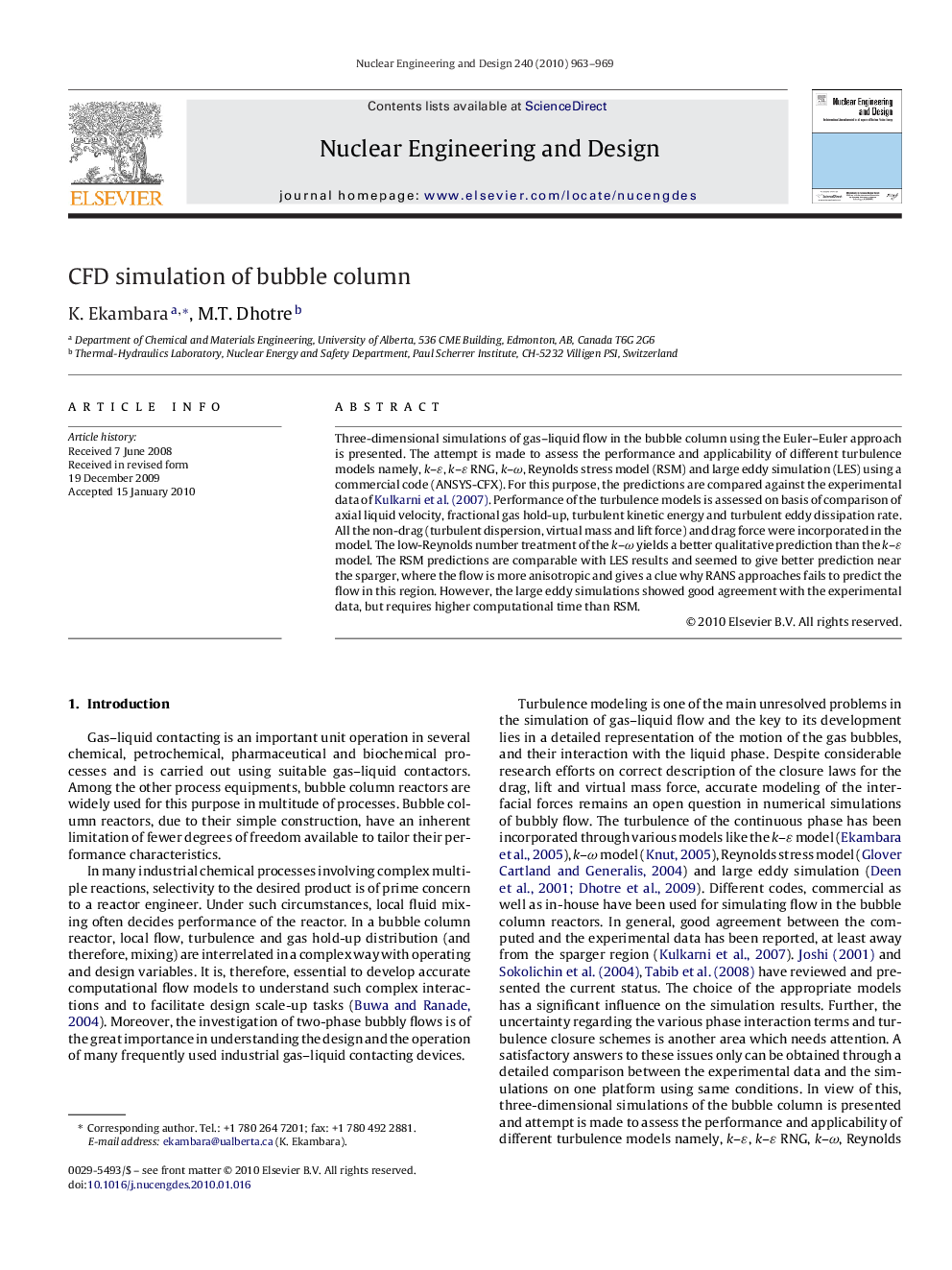| Article ID | Journal | Published Year | Pages | File Type |
|---|---|---|---|---|
| 298007 | Nuclear Engineering and Design | 2010 | 7 Pages |
Three-dimensional simulations of gas–liquid flow in the bubble column using the Euler–Euler approach is presented. The attempt is made to assess the performance and applicability of different turbulence models namely, k–ɛ, k–ɛ RNG, k–ω, Reynolds stress model (RSM) and large eddy simulation (LES) using a commercial code (ANSYS-CFX). For this purpose, the predictions are compared against the experimental data of Kulkarni et al. (2007). Performance of the turbulence models is assessed on basis of comparison of axial liquid velocity, fractional gas hold-up, turbulent kinetic energy and turbulent eddy dissipation rate. All the non-drag (turbulent dispersion, virtual mass and lift force) and drag force were incorporated in the model. The low-Reynolds number treatment of the k–ω yields a better qualitative prediction than the k–ɛ model. The RSM predictions are comparable with LES results and seemed to give better prediction near the sparger, where the flow is more anisotropic and gives a clue why RANS approaches fails to predict the flow in this region. However, the large eddy simulations showed good agreement with the experimental data, but requires higher computational time than RSM.
